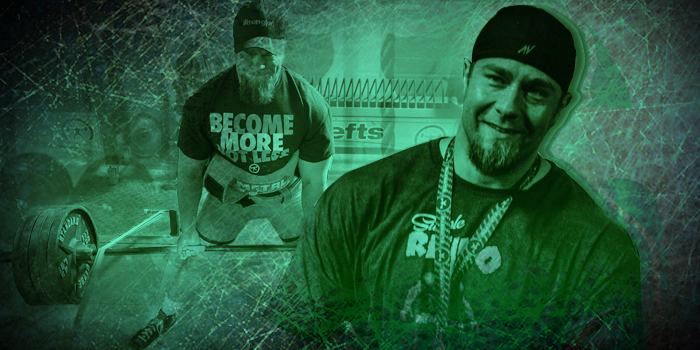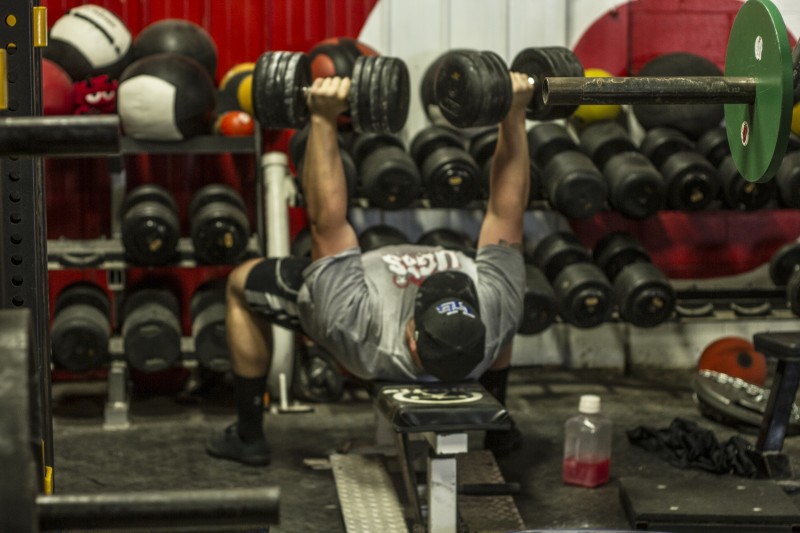
You emerge from the steamy jungle with your trusty whip. After consulting the ragged map, you know this must be the place. Slowly you enter the cave in search of treasure. Each step is taken with caution, avoiding spiders, snakes, and the most dangerous of all: traps. Just like Indiana Jones walking into the cave in search of the next treasure, you are in search of personal records. There are traps that lifters often fall into when starting on their conjugate journey. Avoiding these traps will help speed up your progress.
Trap #1: The Idea of Optimal Training
When I started using the conjugate system in 2001 I devoured every piece of information I could find. I read every online article, watched every VHS tape, and dug into the now-extinct magazine of the time. When I was around better lifters I asked as many questions as I could.
When I was referred to Prilepin’s chart I took it as gospel. I did the same with the recommended reps that Louie and others gave for exercises like dumbbell extensions (~50) and barbell extensions (~40). I would do the “optimal” number of reps and be done, because optimal is how you train. I got a little stronger but something was missing.
I worked hard and made improvements over the years but not at the rate I wanted. It took me a long time to figure out that the optimal recommended reps was not enough for me. I was not average and needed more work in certain areas. When you look at the numbers on the chart, that is a snapshot of what was going on in their training at that time.
RELATED: Speed Work — Are You Doing It Correctly?
You also notice that there are ranges. Pushing my workout to the top of that range and beyond gave me the progress I wanted. This was especially true for me on the bench. I have extremely long arms which means that even if my triceps are the same strength as someone with short arms, the other person will bench more at the same technical skill. Not only was more work better for me, but specifically more pressing made a huge difference. You can see exactly what I did in my article about Trashy Triceps. You and you alone (or help with a coach) can determine your optimal.
There is one more thing I ask you to think about when using Prilepin’s chart: I can’t give exact details of the weightlifters program but I am willing to bet most were going heavy multiple times a week, with multiple exercises (snatch, clean and jerk, squats, overhead squats, etc.) and not just one day a week. Your training should not be 100% based exactly on this chart or even what someone else says is optimal. Only you can determine your own optimal.
How to avoid this trap: Use this chart as a guide that can change over time. It is not set in stone. Try the minimal, optimal, maximal and volumes above those listed on the chart. Track volumes and intensity so you can adjust after every cycle.
Trap #2: The Instagram Imitator
This has as much to do with ADD as it does with avoiding assistance work. These are the lifters who come into the gym after spending their day on the internet watching lifters do different compound movements. When they get to the gym, they want to try the Spoto press, Larsen press, pause deadlifts, negative deadlifts, or anything else that stronger lifters are posting.
The workout starts off with normal max effort or dynamic effort, but then it becomes a quest to do as many different variations without ever actually pinpointing and attacking any specific weakness. They might have weak abs, low back, or hamstrings, but the new exercises were picked because they were the newest thing being posted on the Instagrams.
This lifter shotguns his training without giving one exercise a chance to work. He never learns what supplemental exercises are his bread and butter. They are tossed in for a week and then next week it is whatever he saw in his newsfeed. I am all for experimenting and trying new things, but you need to give it time to work. Give it three weeks and then rotate it out. Test and retest.
How to avoid this trap: Do your main exercise, one supplemental exercise, and then assistance work. Give new exercises 1-2 full cycles to assess their usefulness. Don’t toss in too many new exercises at once.
Trap #3: The Crazy Exercises
I also was caught in this trap a few times. In a quest for ultimate strength and unlimited exercise variation, things can spiral out of control quickly. You go from a normal three-board press and quickly it turns into a close grip, reverse band, three-board press with added hanging kettlebells and Fat Gripz. How often will you do this variation so you can actually break the record?
WATCH: Best Secondary Movement for the Squat
Don’t overthink it! Adding one variable to a main exercise is plenty. Add Fat Gripz, reverse band, chains, or normal bands. But do you really need five different variables to manipulate? Watch some of the top lifters and you will see that it is rarely if ever more than one variable from the source.
A close grip board press with added chain — Matt Wenning does a great job with keeping it simple. You can have records with one, two, or three chains, but you need to come back to it enough to break those records. If you never come back to test it, how will you know if your training is working?
Keep it simple and don’t try to reinvent the wheel. Figure out what builds your lift and then keep building.
How to avoid this trap: Use one deviation away from the main exercise. Make sure to have exercises you will come back to every six to 12 weeks. If you are not making progress find the three basic exercises that haven’t moved. Get them moving and so will your main lift.
Trap #4: The Busy Bee
It’s summer here in Northwest Indiana. If you go sit outside for a while, you are bound to see a bumble bee. My question is, have you ever really watched a bee? I mean, we have all seen them flying around, but have you ever seen a bee getting work done? Every now and then you see one on a flower, but most times they are just buzzing around. Some lifters are just like those bees — buzzing around the gym looking like they are doing work but nothing really ever gets done. That training is not effective!
They buzz from one exercise to the next with little effort being placed in any one particular exercise. Once they find the elitefts accessories and other new items, they want to try them all. Not only do they want to try them all, they want to use them all in one workout. This is like looking for oil in your backyard by drilling one foot deep in five locations rather than drilling in one spot as deep as possible. Be specific in what you are doing and get more out of less.
How to avoid this trap: Limit assistance work to five exercise. Do those five exercises as hard as you can. Try doing two exercises for 15 minutes without stopping. Work each exercise with the intent of destroying that muscle. Think training density, not breadth.
Avoiding these traps are a must to keep progress moving full speed ahead. Just like Indiana Jones, you need to be prepared. Conjugate training has been the most rewarding and some of the most fun I have ever had. It requires ownership and a tenacity to keep looking for answers, and when you stop breaking records it can be very frustrating. Keep looking for answers, simplify, and ask for help.
Good luck on your quest. Feel free to contact me with any questions you have or schedule a visit at regionbarbell@gmail.com.













Thanks for another good article.
Keep up the great work!